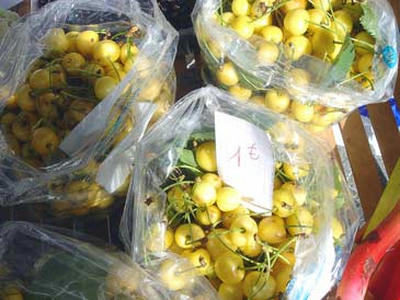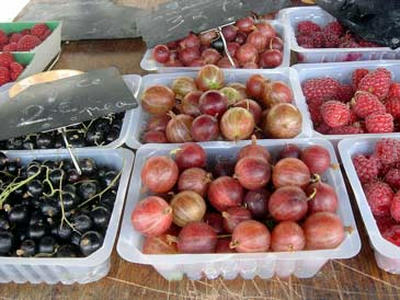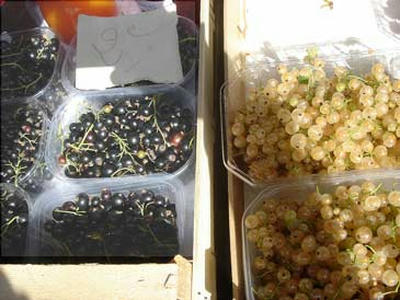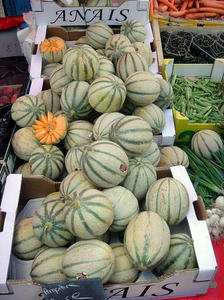[PR]
×
[PR]上記の広告は3ヶ月以上新規記事投稿のないブログに表示されています。新しい記事を書く事で広告が消えます。
The Market in Le Neubourg
Just an hour or so from Paris is the medieval market at Le Neubourg where each wednesday locals crowd the market, choosing their fresh fruits and vegetable, regional raw-milk cheeses and just-churned golden-yellow crocks of butter, along with meats and hand-stuffed sausages from the jovial local bouchers, doling out crispy morsels of sautéed charcuterie.
It’s the kind of market where if you ask the poultry person for a quail, they’ll stick their hands in a box, there’ll be a flurry of activity within, the unsettling sound of ruffling feathers and squawking…then calm. A few seconds later, your dinner will emerge. The medieval market at Le Neubourg is the real thing and has existed for hundreds of years and some of the wares are not for the squeemish.
Nowadays you’ll find vendors selling crisp frites sprinkled liberally with crystals of sel de Guérande, cheery Arabic vendors hawking fragrant olive oil soaps, and rubber-booted fishermen presiding over piles of glistening mussels from nearby Brittany.
Being a baker, I think (and hope), has good karma. No animals have been harmed in the making of any of my desserts. So aside from the live birds and furry bunnies for sale, what wowed me of course was the abundance of berries on display. Judging from the sweet perfume of the raspberries and the plumpness of the currants (as well as the stained fingers of the farmers) they’d obviously just been picked.

Perky sour cherries, which they’ve dubbed for some reason ‘cerises anglaise’.

Unusual crispy white cherries, a variety I’ve never seen before.

Black currants, red gooseberries and loganberries, which I’ve never found in France. The vendor told me they were framboises américain (American raspberries).

Tiny white and black currants, called cassis. Black currants have heavy tannins when eaten raw, and but are unctuous and deeply-flavored when cooked. They’re widely used (and best known) for the syrupy crème de cassis.

A jumble of juicy and vibrant summer melons.
It’s the kind of market where if you ask the poultry person for a quail, they’ll stick their hands in a box, there’ll be a flurry of activity within, the unsettling sound of ruffling feathers and squawking…then calm. A few seconds later, your dinner will emerge. The medieval market at Le Neubourg is the real thing and has existed for hundreds of years and some of the wares are not for the squeemish.
Nowadays you’ll find vendors selling crisp frites sprinkled liberally with crystals of sel de Guérande, cheery Arabic vendors hawking fragrant olive oil soaps, and rubber-booted fishermen presiding over piles of glistening mussels from nearby Brittany.
Being a baker, I think (and hope), has good karma. No animals have been harmed in the making of any of my desserts. So aside from the live birds and furry bunnies for sale, what wowed me of course was the abundance of berries on display. Judging from the sweet perfume of the raspberries and the plumpness of the currants (as well as the stained fingers of the farmers) they’d obviously just been picked.
Perky sour cherries, which they’ve dubbed for some reason ‘cerises anglaise’.
Unusual crispy white cherries, a variety I’ve never seen before.
Black currants, red gooseberries and loganberries, which I’ve never found in France. The vendor told me they were framboises américain (American raspberries).
Tiny white and black currants, called cassis. Black currants have heavy tannins when eaten raw, and but are unctuous and deeply-flavored when cooked. They’re widely used (and best known) for the syrupy crème de cassis.
A jumble of juicy and vibrant summer melons.
PR
カレンダー
カテゴリー
フリーエリア
最新CM
[12/17 VedaSlerceBed]
[12/16 Reargoory]
[12/15 KichUncon]
最新記事
プロフィール
HN:
No Name Ninja
性別:
非公開
ブログ内検索
最古記事
P R
